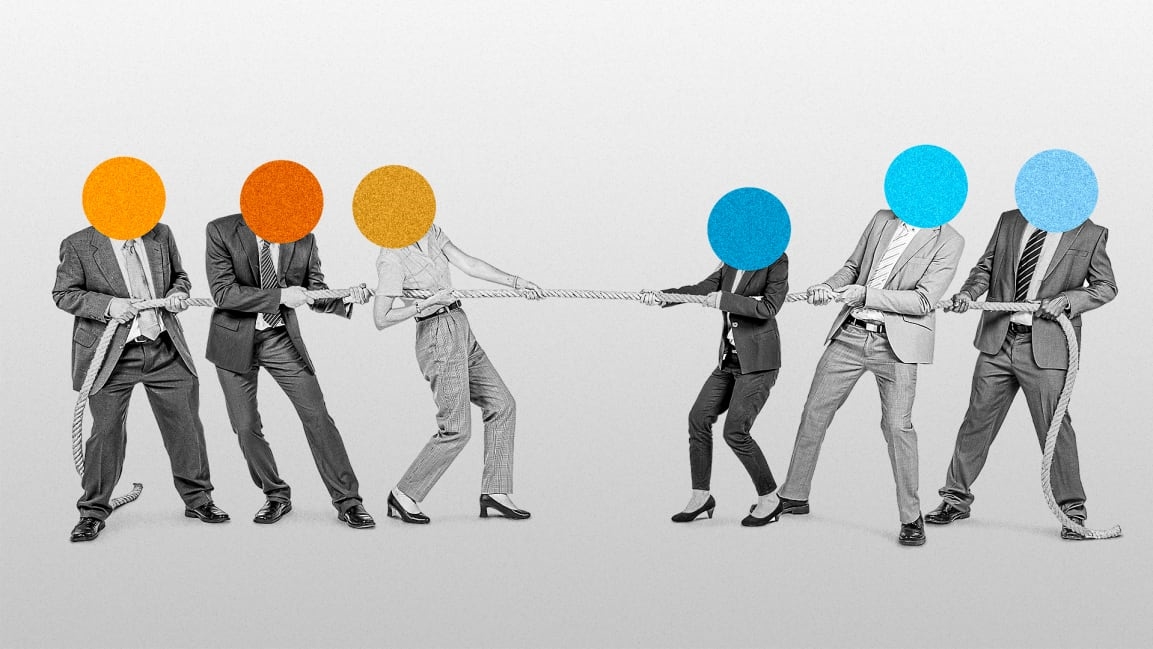By Alida Miranda-Wolff

What often goes unsaid in workplaces is how well employees perform (which in a perfect system determines how they advance) is dependent on their social environments. However, if the social environment is dysfunctional, out-of-sync, or toxic, that creates significant barriers and hurdles to improvement and promotion.
Early on in my diversity management program, we were discussing the power of diverse teams. Naturally, we were all listing the benefits of diversity in our own organizations. That’s when our facilitator, Sukari Pinnock, said, “The thing about diverse teams is that they aren’t more successful; they actually underperform, unless they engage in team development. Then they outperform non-diverse teams.”
Her central argument was simple. When we are different from one another, we are more likely to have opposing points of view which leads to conflict. Without appropriately establishing norms and boundaries, getting to know each other, and setting mutual goals, team members may find themselves coming into conflict so much they can’t move together toward high performance. This argument highlights our collective cultural (so, very American) fear of conflict. We shy away from people who are unlike us because we fear clashing with them, even when so much of the business thought leadership today emphasizes that healthy conflict drives more innovation and better results.
As someone who not only works on a diverse team but also facilitates change in both homogenous and diverse teams, I started investigating how conflict specifically manifests on diverse teams, which ultimately led me to apply conflict management principles and models in several different company systems.
What I found is that humans evolved with “toward” and “away” responses. We move toward those who are like us (friends) and away from those who are different (perceived foes). We are so primed to associate with one another based on the similarity that even the smallest shared social identification brings us together and amplifies the likelihood of intergroup bias. In other words, the “us and them” impulse is strong.
There are a number of early childhood studies that show this dynamic at play. For example, a 2011 study found that five-year-olds randomly grouped with other unfamiliar children by color (red or blue) preferred pictures of children wearing the color that corresponded to their own groups. As Mapping Innovation author Greg Satell points out, these preferences manifest in adults, too. In a study of adults randomly assigned as “leopards” or “tigers,” fMRI studies noted intergroup bias and hostility toward the other group, regardless of race. Bias requires both a sense of similarity and of difference. The perceived difference may breed hostility and conflict.
Despite these findings, diverse teams are not destined to underperform unless they can find common ground. There is a body of evidence showing that homogenous teams underperform precisely because they experience more “comfortable” environments, while diverse teams overperform due to the increased effort necessary to work within them.
As David Rock, Heidi Grant, and Jacqui Grey emphasize in their 2016 analysis for the Harvard Business Review, homogeneous teams collaborate easily, understand each other inherently, and are prone to make the wrong judgments.
For example, in a 2009 study published in Personality and Social Psychology Bulletin, fraternity and sorority members who are more likely to self-select into groups based on similarity and a strong sense of shared group identity engaged in an experiment to solve a murder mystery. Teams either remained homogeneous throughout the experiment or introduced “outsiders.” Homogenous teams reported feeling like they were progressing more smoothly and collaborating more effectively, while the diverse teams found the experience harder, and the participants felt less confident in their final decisions. Yet the homogenous teams made the wrong judgments, getting the answer right only 29 percent of the time. Groups with outsiders arrived at the correct solution 60 percent of the time. The work felt harder and the outcomes were more likely to be successful.
We are more fearful of outsiders and tend to find collaboration harder with them at the very same time that we produce better work through that partnership. The conflict we experience in more diverse teams is precisely why we see better results on them. We just have to make sure that conflict isn’t so explosive that collaboration stalls completely.
When it comes to conflict, I have an almost pathological need to make everyone happy, and I will neglect my own needs or pursue the wrong path if I imagine it will make others feel better. On a diverse team, this means that I personally feel wiped out during collaborations and can shy away from the conflict necessary to get us to the best final product. And I’m a DEIB (diversity, equity, inclusion, and belonging) practitioner. Consequently, I’ve had to learn behavioral modifications that allow for me to be fully present with conflict and manage it so that I can engage with it healthily. I can’t pretend to be 100 percent perfect in this practice, but I can say that I’ve made noticeable progress with the following four principles I’ve come up with for managing (not eliminating) conflict on teams.
- Conflict management is about looking for a mutual goal. At the beginning of team development, we all align on one goal we can get behind. Our thinking, strategies, processes, and practices may all be different and divergent after that point, but we will have an anchor to ground us and remind us of the value of fully engaging with each other in collaboration.
- Healthy conflicts involve parties who respond rather than react. Emotional regulation is essential to healthy conflict. That means creating enough mental space for oneself to assess a situation and intentionally mobilize energy before engaging.
- Conflicts end with a decision. This means clearly stating what is going to happen, even if it’s “agree to disagree.” Whether the decision is not to change at all or to pursue a whole new path, it must be explicitly stated and recognized in the group.
- The conversation doesn’t end with the conflict resolution. Once conflict on a team is resolved, I have observed a tendency (including my own) to avoid team members for fear that somehow the conflict will start over. However, this approach allows for the conflict to reopen, especially based on a feeling that “We aren’t talking so something must be wrong.” Bonding after strain and struggle leads to a deeper connection.
The idea of responding rather than reacting often feels out of reach for many of the teams I coach and facilitate.
Excerpted from Cultures of Belonging by Alida Miranda-Wolff. Copyright © 2022 by Alida Miranda-Wolff. Used by permission of HarperCollins Leadership.
Alida Miranda-Wolff is the CEO and founder of the consulting company, Ethos, and the author of Cultures of Belonging: Building Inclusive Organizations that Last. Alida received her certification in diversity, equity, and inclusion from Georgetown University and has nearly a decade of practicing experience.
Fast Company , Read Full Story
(46)
Report Post




